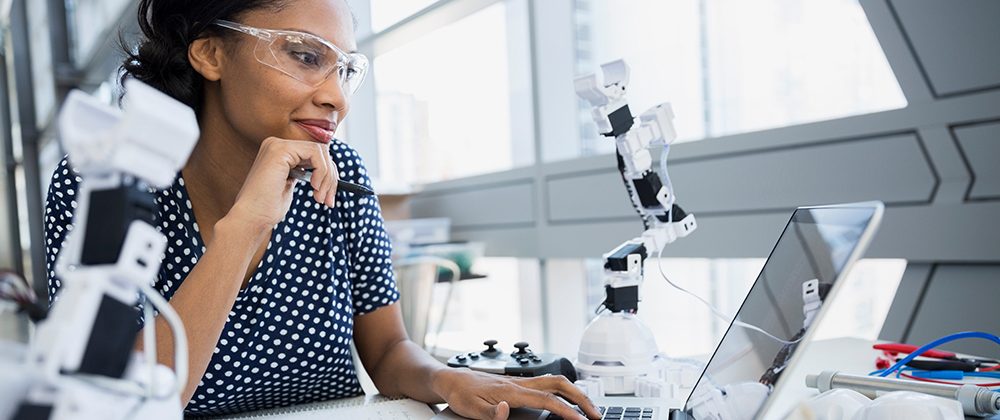Service robots differ dramatically from industrial robots, performing work much closer to humans in the home or at work, explains Mohammed Aldousari at Proven Robotics.
The futuristic vision of humanity has always been of a society where devices of all sorts, little and large, are capitalised on by people to improve the quality of personal and business life.
Robots, as they exist are still in the early stages of the innovation cycle. But are rapidly improving through a convergence of technologies into the next levels of sophistication.
Robots can be applied as key components of a much larger engineering chain, such as in industrial production. And they can also operate as standalone, independent devices, performing specific tasks, continuously and without any interruption. In other words, service robots.

Unlike industrial robots that have been incorporated for many years now, service robots are relatively new and designed to support humans in their daily lives.
According to World Robotics 2021 Service Robot reports, the global market for professional service robots reached close to $7 billion, up 12% from 2020. It is expected to reach $70 billion by 2032. The International Federation of Robotics report suggests the pandemic was one of the major driving factors behind relooking at the major robotic service trends.
When built to deliver specific services, such robots have multiple benefits:
- Improvement in productivity due to continuous 24/7 non-stop performance
- Improvement in efficiency since multiple types of routines can be specified and executed without risk of failure
- Improvement in safety since human lives are not being exposed and stressed
In any social and cultural environment, the idea of bringing in automated services, machinery and equipment, through service robots, conjures up fears of redundancy, retrenchment, and layoffs of human employment. However, with a more detailed assessment, the large-scale benefits for the worker, customer, and owner become evident.
Some of the application use cases for service robots include:
- Transport and delivery
- Sanitation and cleanliness
- Rehabilitation and medical recovery
- Education and remote learning
- Telepresence and social company
- Customer services
We take a look at some of the fastest growing and most important application and use case areas for service robots.
Logistics and warehousing
The logistics warehouse is a hive of activity. Volume goods are continuously being delivered, stacked and indexed, retrieved and then dispatched. This is a never-ending cycle. Robots can be programmed to fit into any of these segments of warehousing operational processes. The form factor is typically autonomous vehicles, lifters and carriers, and now even drones for smaller form factors.
Such robots are characterised by having low intelligence, are usually distributed in large numbers to be useful, and are now in high demand. This form factor has a CAGR of 21% over the next ten years and is one of the primary application use cases for service robots.
Cleaning and sanitisation
The process of cleaning and sanitisation of the workplace, leisure areas, homes and other places of human movement and habitation, is an integral everyday operation. This process prepares the area for the next round of engagement with humans. Because of its importance coupled with the benefits that it offers; this category of household and professional cleaning robots is the second largest amongst service robots.
Cleaning and sanitisation tools built into such service robots can be either contact based, that is brushes and detergent; or non-contact based, that is sprays and UV light. The importance of this application use case for service robots was highlighted during the pandemic and was used extensively in some countries.
Customer services
These robots that can have a humanoid or non-humanoid form factor, moving or stationary in presence, are designed to interact with customers through a face-to-face engagement. Their purpose is to automate many of the basic customer service tasks. Their investments are typically presented against benefits through automation of tasks and routines, workforce savings, efficiency and productivity through 24x7x365 days of usage.
Other than the fact that they are meant to provide information and a limited range of services at the request of customers, their importance lies in the fact that they can gather engagement data from the experiences customers have with these robots. This includes nature of the query, time spent, success rate and so on.
Most customer service robots help customers to find an item in a retail outlet, the price of an item, or complete a task for a customer. They can also guide customers in a retail outlet or lead customers around in a hospitality establishment. Their presence will become increasingly intuitive and expected in retail outlets, large outlet malls, family entertainment centres, over time.
Pepper is an example of a service robot designed to perceive emotions and form empathetic connections with users. Pepper has become familiar for welcoming guests with a warm “Hello, how may I help you?”. Some of its successful application use cases include serving as an airport concierge and hospital assistant. It has face recognition software as well as a touch screen for information display.
Other well-known service robots include Double 3, PuduBot, BellaBot, KettBot, HolaBot, Puductor 2, and Xenex.
As the usage of service robots increases and innovation levels improve, the powerful range of benefits are likely to trigger a wave of regional adoption. Finding a service provider to provide robots as a service is a good way to move forward into the realm of leveraging robotic innovation.


